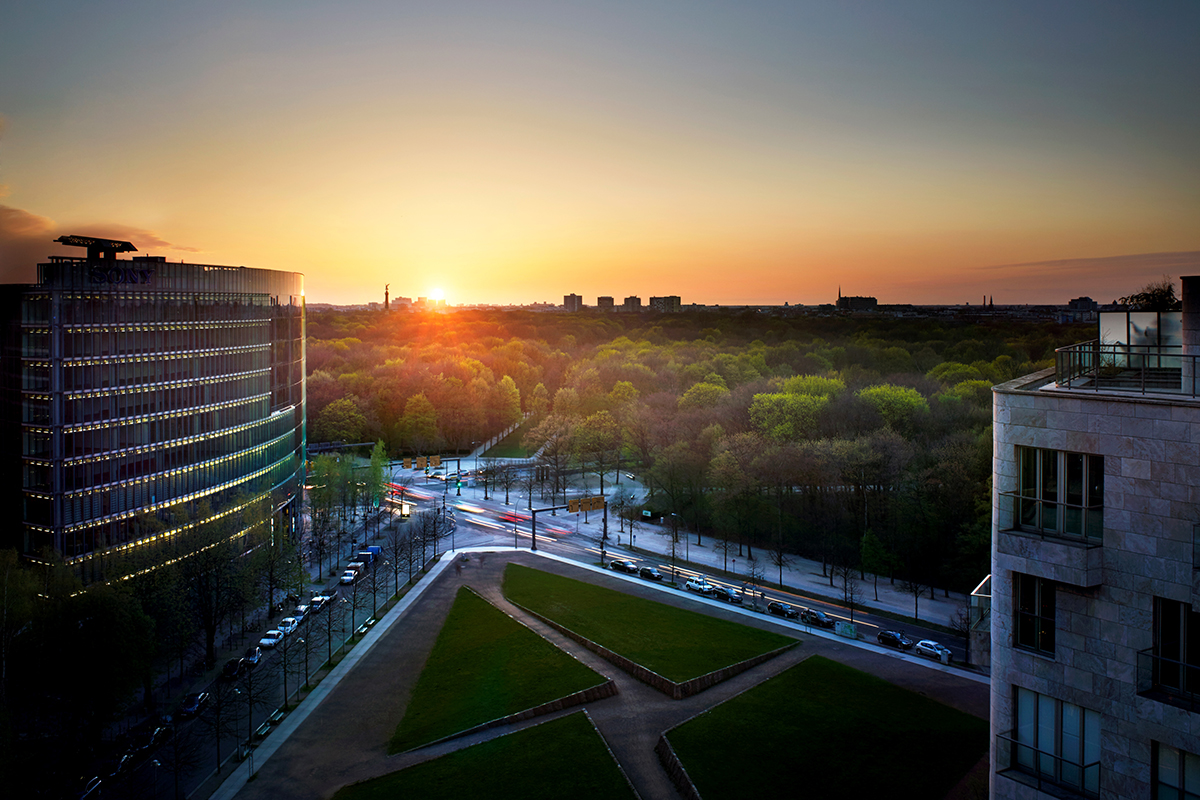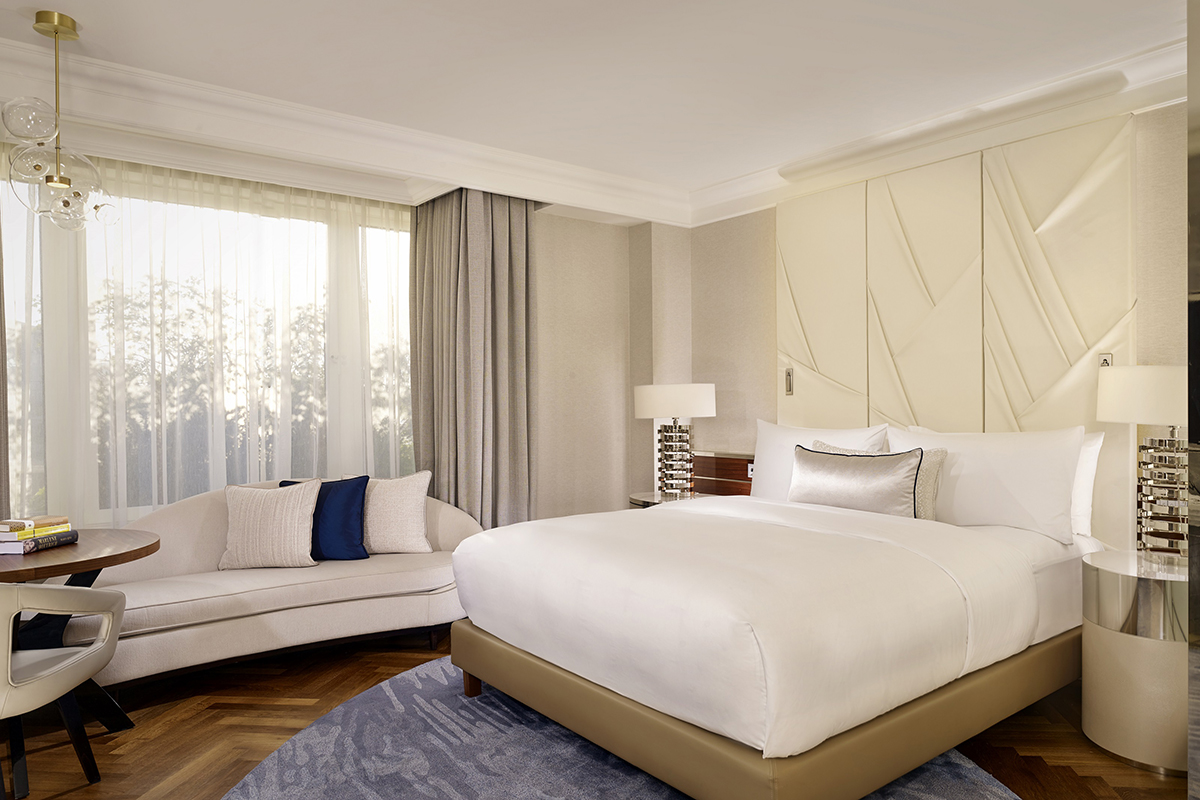This website uses cookies so that we can provide you with the best user experience possible. Cookie information is stored in your browser and performs functions such as recognising you when you return to our website and helping our team to understand which sections of the website you find most interesting and useful.
The inspiration behind Ritz-Carlton Berlin’s €40m Art Deco renovation
By Michelle Johnson | 25 July 2019 | Travel
We speak to interior designer Robert Balogh-Csapár about his 1920s-style revamp of the German hotel

The Ritz-Carlton Berlin has dominated the city's Potsdamer Platz for decades, with the 303-room hotel inviting guests to enjoy the city's rich history in entirely modern comfort. The five-star hotel is opposite the remnants of the Berlin Wall, while inside, guests can enjoy a return to the city's 1920s golden age more than ever more, thanks to an Art Deco-inspired renovation.
The €49m renovation was masterminded by interior designer Robert Balogh-Csapár, who wanted to capture the transformative nature of the German capital, while still allowing guests to make use of its renowned amenities. The hotel's Curtain Club has been voted Best Bar Culture in Germany three times and the Ritz-Carlton Berlin houses the city's largest ballroom and event space, as well as a spa and wellness centre.
Balogh-Csapár was also keen to allow for the hotel's guest experience to shine, creating stunning spaces for its concept bar Fragrances, led by mixologist Arnd Heissen, and new Restaurant POTS, with contemporary German cuisine created by chefs Dieter Mülle and Frederik Grieb and sommelier Mathias Brandweiner. Suites and rooms are equally breath-taking, with dramatic floor-to-ceiling headboards and geometric lines, and hand-selected Art Deco furniture. Here, Balogh-Csapár tells Tempus how he created this love letter to Berlin…
Robert, this renovation was a huge project. What were your influences?
My biggest influence was the city and its history. Berlin never stands still. It always transforms, advances, reverses; always changes. The last century in the city’s life is explicitly typical for that. From the Golden Age of the 1920s through the darker periods of the 30s and World Wars, the split city during the Cold War right through to the German Reunion and modern times, Berlin has showed many faces. This restless and vibrant attitude is what makes the city so fascinating. We were inspired by the vibe of the Golden Age era with its glamour and shine. We tried to interpret these in design elements such as paravane and screen motifs, radiating patterns and light installations, feather elements and geometrical patterns inspired by the Art Deco movement.
What was so special about the 1920s era?
The 1920s in Berlin was a period of creative boom enveloping different sections of society, and which resulted in a significant artistic surge in German culture. It was also a period when architecture and interiors took on a whole new direction, and Art Deco would become the style of the age. Today, Berlin is experiencing a new golden age, with the same buzz that it had almost 100 years ago. We wanted to show a link between now and then, and create a design which is contemporary, has clear references to the golden years of the previous century and also unites the interiors with the façade of the building. >>
Related: The Alexander's Hayk Sahakyan on why Armenia is the next big luxury destination

What were the biggest challenges you faced during the renovation?
The biggest challenge was to transform an existing building with a classical aesthetic into a contemporary space with Art Deco references, while retaining the original walls, floors and ceilings. This also had to be done in an operating hotel and within certain budget and time limitations. But those limitations ultimately gave us a backbone from which to build our design on and, in a way, turned the initial restrictions to advantages.
How did you achieve your contemporary twist on Art Deco design?
We tried to incorporate elements of Art Deco in a modern, subtle and sophisticated way, but never with authentic, original pieces from that era. We explicitly wanted to avoid that. There are some unique pieces, for example the folding panel paravane wall in the Ritz-Carlton Suite, which is a reflection of the Golden Age of Berlin. But it's also a contemporary, captivating design element; a wall to remember.
The main aim was just to create hints of the Art Deco style rather than being too direct. Modern forms, furniture, lighting and even art were combined with 1920s references such as patterns, colour combinations or small accessories. The intention was for the guest to feel the spirit of the era but also see the design language of the present days. By doing so we believe we have created a timeless design which we hope the guests will remember.








